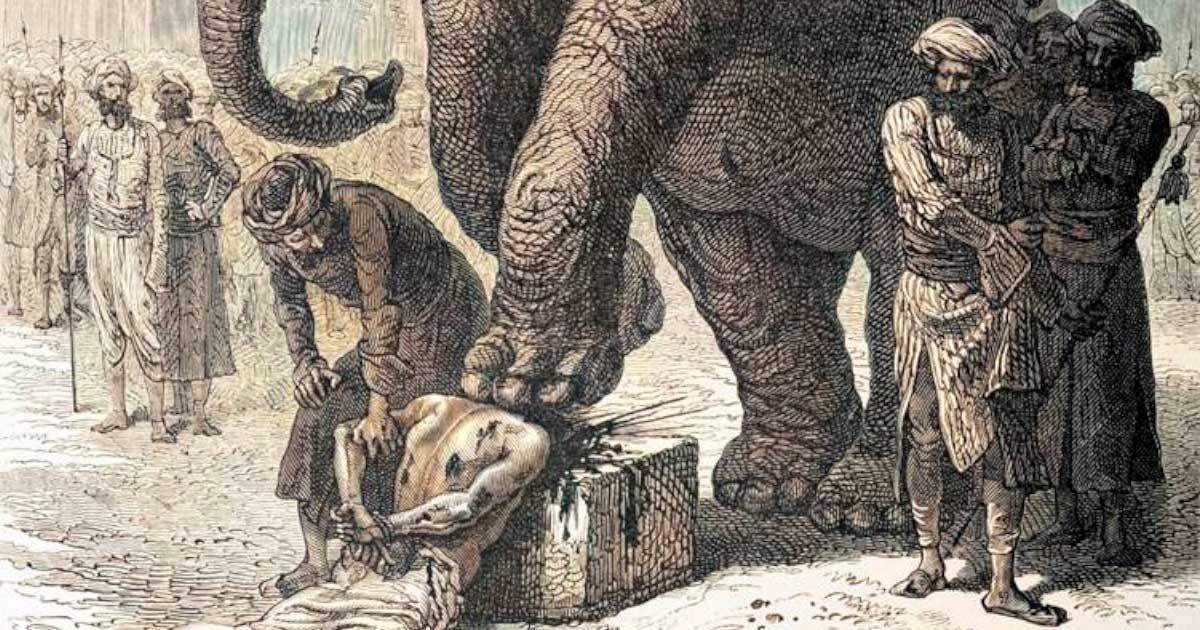In ancient Asia, death by elephant was a particularly gruesome and barbaric execution method that was commonly practiced for centuries. The Mayura, or royal elephant, was considered a sacred animal and a symbol of royal power in many Asian kingdoms. However, these magnificent beasts served a macabre purpose beyond simply carrying royalty. They were also trained to become instruments of execution, meting out a slow and painful death to the most deplorable of criminals.
The training of elephants for execution was a long and arduous process that focused on instilling a sense of obedience and aggression in the animals. The calves were captured from the wild and separated from their mothers at an early age to facilitate the training process. Thereafter, the elephants were conditioned to respond to commands, which involved the use of verbal instructions, gestures, and even the use of whips and hooks.
The elephants were also taught to perform specific tasks that made them an effective instrument of cruel and unusual punishment. One such task involved slowly breaking the bones of the victim. Using their immense strength, the elephant would crush the limbs of the criminal, leaving them helpless and writhing in agony. The sight of the limbs cracking and splintering under the forceful weight of the elephant’s trunk would fill the audience with a mixture of horror and awe.
The elephant’s trunk was also capable of causing immense damage, and it was used to crush the skulls of the condemned. The executioner would guide the elephant towards the criminal, who was securely bound to a wooden pole. The elephant would then wrap its trunk around the head of the victim, crushing the skull until it was nothing but a pulpy mass. This was an excruciatingly painful way to die, and the screams and cries of the victims would echo throughout the execution ground.
In some parts of Asia, elephants were also fitted with large blades, which were attached to their tusks. The blades, known as gajaselor, were sharp and jagged, enabling the elephant to inflict deep and grievous wounds on its prey. These sharpened tusks were used to execute criminals in a particularly heinous and brutal way. Once the blade was inserted into the victim’s body, it would be twisted to inflict maximum damage, leaving the victim writhing in pain and suffering.
The use of elephants in execution was still popular in Asia, particularly in the southern part of the continent, well into the late 19th century. Various kingdoms had developed their own unique techniques for training, conditioning, and reinforcing the elephants for this purpose. Despite the brutality and inhumanity of this practice, it continued to be a popular form of execution for centuries.
In conclusion, elephants in ancient Asia were trained and used as instruments of execution. The elephants were taught to slowly break bones, crush skulls, and even use sharpened tusks to execute criminals. The use of elephants in execution was celebrated as a symbol of royal power, and it continued to be a popular form of punishment until the late 19th century. The barbaric nature of this method of execution is a testament to the brutal and inhumane nature of ancient Asian justice systems.
image sources
- Execution-by-elephant: https://www.ancient-origins.net/sites/default/files/styles/article_image/public/field/image/Execution-by-elephant.jpg?itok=W-nccTkD



